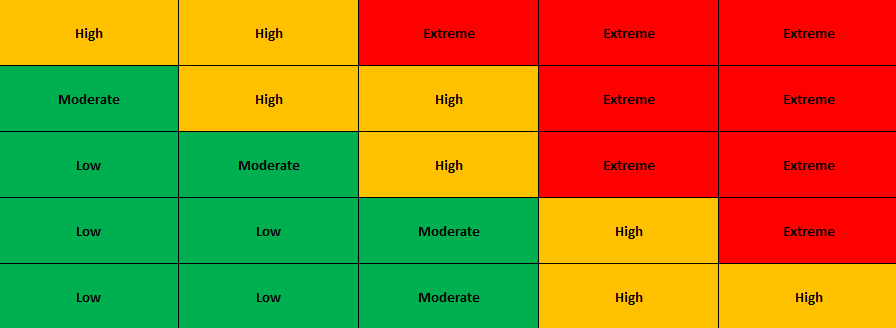Qualitative risk analysis focuses on not producing detailed numbers directly related to actual monetary figures. Qualitative analysis is not as focused on precise money calculations, making it considerably easier to calculate. However, many businesses prefer the quantitative analysis\’s focus on money, as it is far easier to plug those numbers into budgets and projections. A common approach to Qualitative Risk Analysis is to build a risk matrix, which is common in Vulnerability Analysis. The Risk Matrix illustrates the risk continuum (for example extreme to low) by plotting the Likelihood and Impact associated with a threat vulnerability pair.

In qualitative risk analysis, two simple methods are well known and easily applied to risk:
- Keep It Super Simple (KISS)—This method can be used on narrow-framed or small projects where unnecessary complexity should be avoided. The assessment can be made easily by teams that lack maturity in assessing risk. This one-dimensional technique involves rating risk on a basic scale, such as very high/high/medium/low/very low.
- Probability/Impact—This method can be used on larger, more complex issues with multilateral teams with risk assessment experience. This two-dimensional technique is used to rate probability and impact. Probability is the likelihood that a risk will occur. The impact is the consequence or effect of the risk, generally associated with the impact on schedule, cost, scope, and quality. Rate probability and impact using a scale such as 1 to 10 or 1 to 5, where the risk score equals the probability multiplied by the impact.
For a quick and easy risk assessment, a qualitative assessment is what 80 percent of organizations use.
Qualitative risk analysis can generally be performed on all business risks. The qualitative approach quickly identifies risk areas related to normal business functions. The evaluation can assess whether peoples’ concerns about their jobs are related to these risk areas. Then, the quantitative approach assists in relevant risk scenarios to offer more detailed information for decision-making. Quantitative risk analysis provides more objective information and accurate data than qualitative analysis. Although quantitative analysis is more objective, it should be noted that there is still an estimate or inference.
Finally, a qualitative risk analysis is the first choice regarding ease of application; a quantitative risk analysis may be necessary. However, if qualitative analysis results are sufficient, there is no need to do a quantitative analysis of each risk.
Qualitative Vs Quantitative Analysis
| Qualitative | Quantitative |
|---|---|
| Easy To Perform | Tie to money |
| Fast result | More attractive for stakeholders |
| Awesome for prioritize | Not as subjective |



